#coche inciarte
Text

José Luis "Coche" Inciarte and Numa Turcatti on May 7th 1972.
I came across this picture yesterday, to my immense surprise. Although they had a mutual friend (Gastón Costemalle), I had no idea that Numa and Coche knew each other before the accident.
In the picture, they're playing soccer for Loyola, a club that now takes Numa's name.
Their twitter and instagram.
45 notes
·
View notes
Text
From left to right: Gustavo Zerbino, Álvaro Mangino, José Luis Iniciarte, Roberto Canessa , Fito Strauch, Daniel Fernández Strauch, Pancho Delago and Roy Harley

(Photo Credit Here)
#flight 571#i will tag all their names when im sober lads#gustavo zerbino#Álvaro Mangino#José Luis Iniciarte#coche inciarte#roberto canessa#adolfo fito strauch#Fito Strauch#Daniel Fernández Strauch#Pancho Delago#roy harley
32 notes
·
View notes
Text

It's hilarious that Coche keeps describing Canessa as a kid, as if he himself is so old and wise at all of 24 years old
30 notes
·
View notes
Text
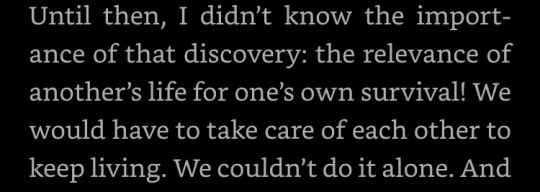
José Luis “Coche” Inciarte, Memories of the Andes
#iphi.post#bookblr#booklr#words words words#litblr#miracle in the andes#memories of the andes#coche inciarte#society of the snow
7 notes
·
View notes
Text

Book 28 of the 50 book challenge. Memories of the Andes by Coche Inciarte. This is a memoir about the author surviving the Andes in 1972. He was one of friends who went to watch the game and at the time was 26, a bit older than most of the guys. He was weaker by the last few weeks before they were rescued. He got gangrene in his leg after the avalanche and he got much weaker. He believed he might die if they weren’t rescued before Christmas Eve. They were rescued 3 days earlier. It’s a good book.
#book 28#50 book challenge#2023#memories of the Andes#coche inciarte#memoir#Andes plane crash#cannibalism#plane crash#death#book#me
1 note
·
View note
Text
why I'm happysad that they let Numa be the narrator in Society of the Snow.
So if you, like me, have been more than a little obsessed with the story of Uruguayan Air Force Flight 571 for a very, very long time, your stomach probably dropped like mine did when the narrator introduced himself as Numa Turcatti. (My immediate thought was, "why would you do this to us?!") If you went in blind, I feel for you!
But while the film gave us a version of Numa, since it's from his perspective what it doesn't really give us is the group's perspective on him. He comes across a bit like an outsider, and although, yes, his only surviving friend was Pancho Delgado, he wasn’t an outsider for long at all. On the contrary. So, here are a few excerpts from the books that tell you more about what he was like and how much they all loved him, because I feel like that’s important.
From Alive, Piers Paul Read:
Next to Parrado, Numa Turcatti was the most generally beloved of the boys. [...] Since he had known few of the boys before leaving Montevideo, it was proof of his strength, simplicity and complete lack of malice that he became so loved and respected by them.
On celebrating Numa's birthday while trapped under the avalanche:
The boys gave him an extra cigarette and made a birthday cake out of snow. [...] Many would have liked to give him a better time on his birthday, but instead it was he who improved their spirits. "We have survived the worst," he said. "From now on, things can only get better."
From Society of the Snow, Pablo Vierci:
‘When I talk about Numa, I can’t help but cry,’ says Coche Inciarte. ‘He’s the best person I’ve ever met in my life. However tenderly I cared for those who were losing heart, Numa did it much better because he never got tired. He was constantly aware of everyone else’s distress. He radiated peace, he never gave up, and when he came near me, I felt like Jesus Christ himself was among us, with such mercy and compassion in his eyes. I don’t know where he got his strength.’
‘I could never imagine him living in everyday life, because I met him and I loved him in that torment of the Andes,’ says Coche. ‘He had a hard time eating, like I did. We ate the bare minimum in order to survive. I lost one hundred pounds, he lost more. And just like me, his leg became infected after the avalanche. We operated on our legs together with a razor blade. But he deteriorated more quickly than I did, because he had given so much more; he had been too generous.’
Moncho Sabella:
Numa taught us about the anonymous heroism of giving more of himself to others than he reserved for himself. In that balance between solidarity and selfishness, which decided whether you lived or died, he tilted the balance in favour of the others to the detriment of himself. [...] And when the avalanche came and covered the plane, the one who worked the hardest, the one who removed the most snow so that we could come back to life, was Numa. Again, he was exceeding his own limits. [...] In the end, his immune system was so devastated that he got one infection after another. We gave him antibiotics and the doctors on the mountain attended to him every day, but finally he left us. And with him, we all died a little more.
Gustavo Zerbino:
I always remember Numa up there, full of despair, when he told us that he would rather die watching the sky, walking, instead of ending life immobilised in a cave of broken metal. For that reason, after the avalanche, he kept digging and removing snow without rest until he burned himself out with exhaustion. He always thought that his time had come but he wanted to work until the final moment, doing whatever he could to help. I cared for him all those days; I saw how he was hurried to the brink of death, with no defences, getting one infection after another. I went up to him and first I gave him a kiss on the cheek to greet him and asked him how he was doing. He just stared at me with a kind of infinite peace. He never complained. But Numa was quickly deteriorating: from that physical strength and vigour he had had at the beginning, he finished as a skeletal dying boy. He held on to his characteristic qualities until the end though. He was that same stoic guy when he was strong and when he was wasting away.
‘Gustavo Zerbino didn’t tell us the whole truth [about the expedition] because he didn’t want us to be discouraged. When I asked Numa about it, he couldn’t lie and he told me: “As far as we went, all you could see were more mountains.” But even so, he always wanted to be an expeditionary. “I want to go,” he told me, even though I knew at once he could never go, he was too exhausted and too hurt.’ So Numa approached Daniel Fernández, knowing that he had influence over the others, and he tried to convince him: ‘I can do it, Daniel, please believe me. I can do it.’ Daniel recalls, ‘When I told him that his injury made it impossible, he started working even harder than ever, like a bull, shovelling snow to unbury the plane after the avalanche to show that yes, he could do it.’
Finally, from Alive, after Numa died:
On this particular afternoon, Javier Methol lay at the back of the plane. "Be careful," he said to Coche as he rose and stepped over Numa's body. "Be careful not to step on Numa."
"But Numa's dead," said Parrado.
Javier had not realised what had happened, and now that he understood his spirits dropped completely. He wept as he had wept at the death of Liliana, for he had grown to love the shy and simple Numa Turcatti as though he were his brother or son.
I'm not sure the Numa we see in the film is quite the same person that he actually was on that mountain, but I'm so, so glad that he got a voice. He fought so hard for them all.
So, yeah. In the immortal words of Jake Peralta,

209 notes
·
View notes
Text
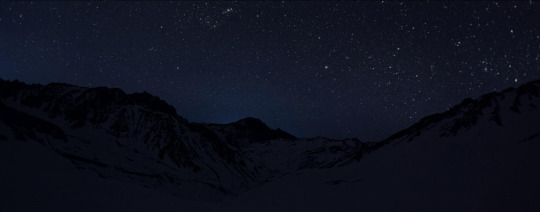



quotes from Society of the Snow written by Pablo Vierci
Chapter 4: Coche Inciarte
Chapter 20: Carlitos Páez
#society of the snow#society of the snow 2023#la sociedad de la nieve#webweaving#web weaving#comforting we share the same sky
48 notes
·
View notes
Text



Todas las caracterizaciones de la sociedad de la nieve son verdaderamente increíbles pero podemos hablar de ellos dos? la foto de abajo es de Alvaro Mangino y Coche Inciarte el día del rescate, pero podemos hablar de como Simón y Juani son verdaderamente IDÉNTICOS?
32 notes
·
View notes
Text
11. Society of the Snow, by Pablo Vierci
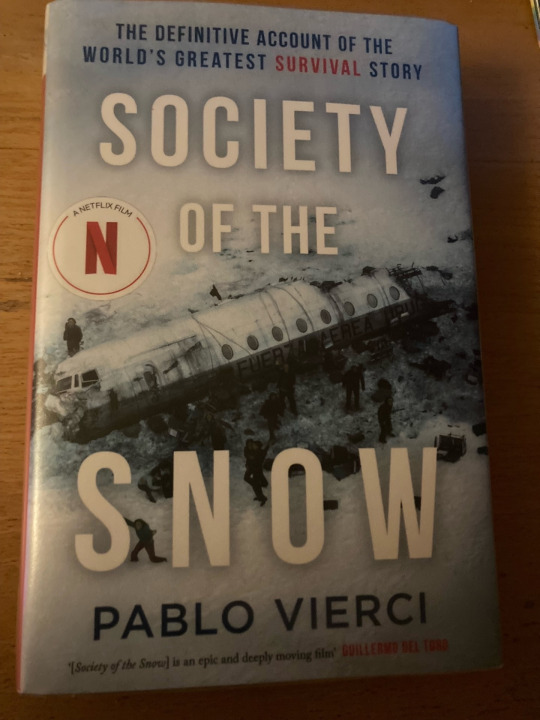
Owned: No, library
Page count: 358
My summary: October the 13th, 1972. A plane carrying a rugby team, some of their friends and family, and a few other people who decided to take a cheap ticket, crashes into the Andes. Months later, two of them stumble down a mountain, having walked over the mountains to bring help for their friends - sixteen survivors out of forty five people. This is their story.
My rating: 5/5
My commentary:
Well, it's happened again - Jamie's reading books about the Uruguayan Flight Disaster. I don't think this should come as a surprise to anyone who's followed this blog for more than a few months. Still, this book surprised me. I have a lot of knowledge about the disaster (survival cannibalism is one of my weird special interests) and while this book didn't teach me anything new with regards to the facts, it did have a lot to say about the opinions of the survivors, their reflections on this horrific event, and the impact of the disaster on the rest of their lives. I didn't know that the author of this book, Pablo Vierci, was a member of the community where the boys came from, and personally knew most of the people involved in the disaster. Although he refrains from editorialising until the end, it's clear that this connection colours the way he chooses to tell this story, and the clear compassion and humanity that shines through his narrative here.
The book is structured with alternating chapters - the first will tell a third-person episode from the disaster in roughly chronological order, the second will be a testimony from one of the survivors, where they mostly talk about their reactions to the disaster and their philosophies around it. All of the survivors are reflected here; the book was written before the deaths of Javier Menthol in 2015 and Coche Inciarte in 2023. As I alluded to in the opening, one of the things I really appreciated here was the space allowed to the survivors to just talk about how they feel about the crash. Reactions ranged from those who openly talk about their ordeal on the mountains, giving lectures and motivational speeches, to those who have not spoken of it at all in the years since. Yet all of them gave their voices to this book. And even through the disparate opinions, some commonalities can be drawn. Not wanting to be seen as heroic for surviving, when it was just chance that meant they lived while their friends died. Helping each other no matter what, the love and kinship felt between the survivors even when their personalities clashed. Respect for those who died, wanting their names to be remembered with equal weight.
Every one of the survivors' chapters ends with a little biographical information about them. It starts with the facts - year of birth, career - then dovetails into a description of their character, as Vierci sees it through their interviews. He is respectful to all of them, shining a light on this diverse group of men and their personalities, showing them in the best light. It's really sweet. Vierci is giving the survivors the humanity that the press sensationalised away, particularly after the cannibalism became public knowledge. These were real human beings who were fighting for their lives, and it's unfair to judge them from the safety and comfort we enjoy. Those who died, and cannot speak for themselves, are still immortalised in the memories of those who survived, and by the printing of the names of all who were on that plane within the book. Vierci wants their stories to be told. And I think he did an admirable job here.
Next up, drama and intrigue in 18th century London, as a fortune teller tries to claim her inheritance.
8 notes
·
View notes
Text
Review: Alive

Synopsis:
On October 12, 1972, a plane carrying a team of young rugby players crashed into the remote, snow-peaked Andes. Out of the forty-five original passengers and crew, only sixteen made it off the mountain alive. For ten excruciating weeks they suffered deprivations beyond imagining, confronting nature head-on at its most furious and inhospitable. And to survive, they were forced to do what would have once been unthinkable...
This is their story - one of the most astonishing true adventures of the twentieth century.
Plot:
Here they were, flying from Uruguay to Chile for a rugby tournament. To lower the cost of the plane the Old Christians team recruited friends, family, and alumni to come with them, filling up the plane to its total of forty-five passengers. During flying they had to make an emergency landing due to weather, in which the boys jeered at the pilots. At the base, the pilots asked another if they thought it was safe to fly over the Andes. A large mountain range that goes down pretty much all the left sides of South America, and pilots only like to fly over it in perfect conditions and during the middle of the day. The other pilots said go for it, and not wanting to look like a wimp in front of the boys, the pilots got their fourth-five passengers back on the plane, for their flight over the Andes. That was their downfall. Crashing the right-wing into the side of the mountain, the plane crashed in the middle of a valley during an Andes snowstorm. Some died from the impact, most had broken legs from their seats crashing into the one in front of them. Determine they were getting rescued tomorrow, the boys laid around waiting for the helicopter to come. Days and days passed, as the boys started doing daily tasks, like melting snow for water, smoking their one cigarette a day, and eating their little rations. This is the story of how forty-five people left on a plane for the Andes, and how seventy-two days later only sixteen are found sitting on a half-covered plane, with the bones of the dead scattered around them.
Thoughts:
When the boys were first discovered, it was Piers Paul Read who wrote the first book about them and titled it Alive. For his first non-fiction piece, Read did a rather good job, giving the straight-up facts that he got from listening to the survivors' stories, leaving all the emotion for the reader to come up with. With this story Read took little liberties, keeping to the story that the survivors told them, and gave the details no matter how brutal. This horror-story survival novel, Read kept in a calm narrative, as you read about these rugby players hard survival on the mountain.
In the back of some copies, there is a P.S. section in which Read was interviewed about how an author could talk to these boys, and then later write a book on what they said. Read goes into that as an author he had to be a good listener, and in the end, to be honest, empathetic, and self-restraint when writing and taking notes during the interview. An interview from two of the survivors, Coche Inciarte and Alvaro Mangino, talks to them if these seventy-two days were the worst in their life. For Inciarte, being fifty-seven during this interview said to him that time was like a small bump in the history of his life, whereas for Manigno it will continue to be the worst part of his life. This interview answered another question that readers may come up with while reading. During the story, the survivors on the mountain were going to name their book 'Maybe Tomorrow', so what made them settle on Alive instead. For Mangino, it was what his father said to his family when they found out he was alive, whereas for Inciarte: “Alive is the best title because the book celebrates life” (p. 11).
Where the survivors were very religious throughout their story, as on several occasions they felt so close to God, this book is not about religion. Like the fact that most of the survivors were rugby players, and mostly all were from Uruguay, their religion has been just part of their story. Because this book was nonfiction, it had some dry parts, and the parts that could have been made exciting, we're not, because again, it is a true story, and read left all the emotion one could feel for the reader. A survivor story of the ages, as forty-five were on the Uruguayan Air Force Flight 571 when it crashed into the Andes Mountains, and after seventy-two days, sixteen was rescued, with a story of a lifetime.
Read more reviews: Goodreads
Buy the book: Amazon
0 notes
Text
Hayatta kalmak için arkadaşlarımızın cesetlerini yedik
Hayatta kalmak için arkadaşlarımızın cesetlerini yedik
Jose ‘Coche’ Luis Inciarte adlı kişi, 49 yıl önce Şili’den Arjantin’e seyahat ettiği sırada, And Dağları’nda geçirdikleri uçak kazasından sonra hayatta kalabilmek için kazada ölen arkadaşlarını yemek zorunda kaldıklarını anlattı.
Şili ile Arjantin arasında yer alan And Dağları’na 1972 yılında çarpan uçaktan hayatta kalan 16 kişiden biri olan José Luis ‘Coche’ Inciarte,72 günlük hayata kalma…

View On WordPress
0 notes
Text
Some very sad news this morning, just a couple of days after I decided to create this blog. One of the 16 survivors, José Luis “Coche” Inciarte, died at the age of 75 (born April 24th, 1948).
Coche got his nickname from his younger brother, who couldn’t pronounce “José” properly. He was 24 years-old at the time of the crash, one of the oldest in the group. He barely knew most of the passengers, as he wasn’t part of the rugby team. Coche was invited on the trip by his close friend and rugby player Gaston Costemalle, one of the first to die when the plane crashed.
Coche is unanimously remembered as one the kindest and most affectionate of the survivors. A gentle soul. After 72 days, his health condition was one of the most critical, as he had a very hard time eating human flesh and his leg was infected.
At the time of the tragedy, he had a girlfriend named Soledad, who he went on to marry just a few months after the rescue. The couple stayed together ever since and had three children (a son and two daughters). He leaves behind nine grandkids.
I leave you with a few pictures down below.
Rest in peace, Coche.

Coche upon his return to Uruguay after the rescue

A recent picture

Soledad, Coche and his mother
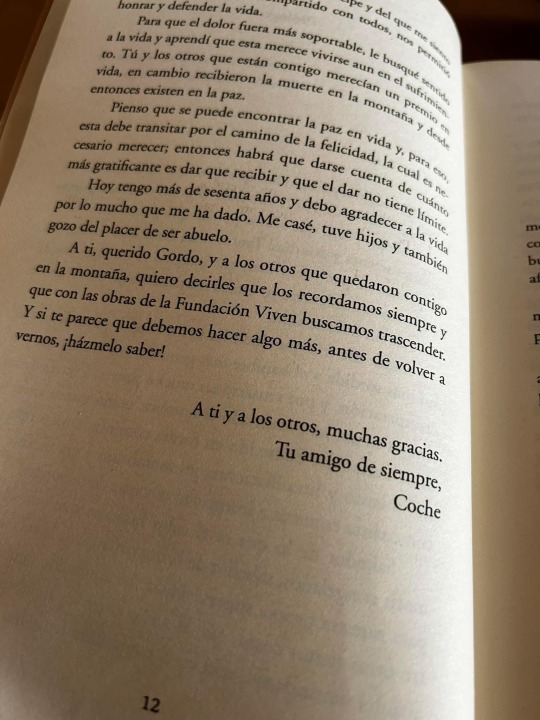
Acknowledgements written in his book “Memories of the Andes” and it’s actually so adorable. The last paragraph says: “To you, dear Gordo [Gaston’s nickname], and to the others that stayed with you in the mountains, I want to say that we think about you all the time and with Foundation Viven we seek to transcend. If it seems to you that we should do something more before we meet again, let me know”.
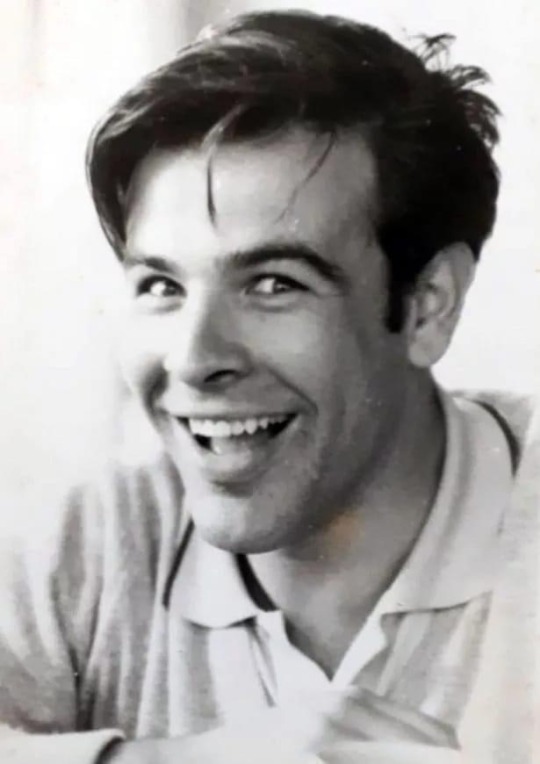
Such a handsome fella

Soledad and Coche
22 notes
·
View notes
Text



Photo credits to Carlos López, Andy Red (Identification credit) and Juanjo Del Campo (Colourized) - Photos taken from the Facebook group 'Grupo Re-Viven!' La Tragedia de Los Andes - El Milagro de Los Andes
#flight 571#carlos valeta#Julio Martinez#Alavro Mangino#Enrique Platero#gustavo zerbino#coche inciarte#numa turcatti#jose luis cohe inciarte#juan carlos menendez#found this in the drafts as well. wig#like 90% of this blog is from that group or the survivors instagrams. nobody look at me /joke#Speaking of Grupo Re-Viven. someone said that Numa looks like Freddy M.ercury once and I can't unsee it#i might add alt ids later with just their names but im busy rn
13 notes
·
View notes
Text






José Luis “Coche” Inciarte, Memories of the Andes
#memories of the andes#coche inciarte#miracle in the andes#iphi.post#bookblr#booklr#words words words
6 notes
·
View notes
Text
Coche Inciarte: "No sé que hubiera pasado si nos quedábamos sin ningún cuerpo" para comer
Entrevista en La Mañana http://www.espectador.tv/videos/la-manana-de-el-espectador/353777/entrevista-en-la-manana/coche-inciarte-no-se-que-hubiera-pasado-si-nos-quedabamos-sin-ningun-cuerpo-para-comer/video-completo?utm_source=dlvr.it&utm_medium=tumblr
0 notes
Photo
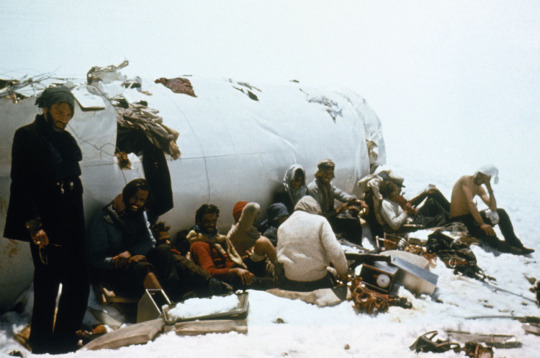
On October 13, 1972, Uruguayan Air Force Flight 571 crashed in the middle of the Andes mountains with 45 people aboard. Sixteen people survived 72 days by consuming those who had died.
#Coche Inciarte#Fairchild F-27#Miracle in the Andes#Roberto Canessa#Uruguayan Air Force Flight 571#Milagro en los Andes
170 notes
·
View notes